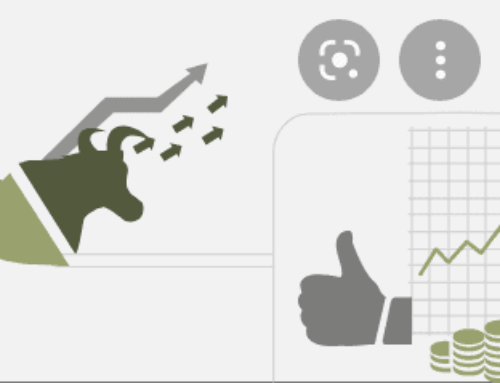What is the best Stock to Buy for Next 20 Years?
So which stock should I invest in for the next 20 years? This is one question which has been asked to me hundreds of times because I’m a SEBI registered investment advisor and I myself have spent a lot of time thinking about it. Hence, I came to the conclusion that for any long-term investment like this, that stock or that investment option should satisfy 3 conditions.
Number 1, which I think the most important is that I should be able to sleep well at night as 20 years is a very long duration. I don’t want to be investing in a stock where I’m always worried that something bad can happen. For example, if something bad happens on an international level or to the management of the company, the stock might fall down 20%, 30%, 40% more. That is definitely a risk and I want to make sure that I don’t lose my sleep.
So the 2nd criteria is that if I have to hold something for that long of a period, I want to see the past performance of that stock, say for the past 20 years to get the confidence that, yes, they have done it in the past 40 years and they can do so in the future.
The 3rd criteria is that I need to have a growth story. I need to have some evidence based on which I can reasonably conclude that these are the reasons because of which I believe that this investment will grow. Now, the above criteria may sound very, very simple, but to be able to find a stock that meets all these 3 criteria is very, very hard.
Why? It is because 20 years is a very long duration and a very long horizon. It’s very hard to say what can happen in the next 20 years. For example, I don’t know if Infosys and TCS will be the technology leaders in the next 20 years, or there can be some technology disruption that can completely change the dynamics of that sector quite possible.
I also don’t know if HDFC bank and ICICI bank will be the leaders of the banking sector in the next 20 years, or maybe one of these FinTech companies could come and disrupt the space and they can completely change the way we bank. We don’t know if Reliance and Mukesh Ambani’s companies will still be leaders. We also don’t know if Reliance and Adani group companies will still be the leaders of this market.
Maybe some other conglomerate can come in and change the dynamics of the market. A lot of these things we don’t know, and honestly, no one knows. If we don’t know any of these things the question that comes next is that, is it even possible for us to find an investment option for the next 20 years?
The answer is yes, and it is possible. There is an investment option that satisfies each and every criterion that we have laid out and that investment opportunity is Indian. Let me explain. I believe that we are at the cusp of a growth path, which can lead India to become a superpower in the next 20 years because Indian economy, believe it or not, has a very special ingredient that our country meets to become a super economic power.
What are those ingredients? Well, the number one thing is that we have a thriving middle class. We are educated, ambitious and have goals. We are not hesitant to work hard and that is of course going to be the core driving factor for the growth of the Indian economy. The second factor, which I think we don’t really appreciate a lot is that we have a democratically elected government.
This government of the people, by the people and for the people, though may not be as efficient as we may expect it to be. However, for any country which has succeeded in the long run, the secret ingredient has been that democracy allows people to choose their elected leaders and to choose a part for themselves.
That is again another key aspect for the Indian economy. Along with that, there are several other factors that make me believe that we are on the right track and to become a powerful economy in the next 20 years. I’m sure nobody’s going to debate that everybody agrees that India is going to become one.
The question then comes is how do we invest in the Indian economy? The best way to invest in the Indian economy is to invest in the best companies of this economy and how do we know who those best companies are? Well, we go by the benchmark index and what are the benchmark indices in India?
We have NIFTY 50 and Sensex among which NIFTY 50 is a selection of top 50 stocks of the Indian stock market and Sensex is basically for the top 30. So, it doesn’t matter what happens 10 years down the line. Let’s say if Bharti Airtel is not the leader in the telecom space and if HDFC bank is not the leader in the banking sector, then they will be kicked out of the index and whoever is the leader at that point of time will be included.
Hence, this selection of stock and the selection of the best company that is leading the market and the ones that are performing at the best is not left to us to decide. The exchanges are doing this job for us and the point that I’m trying to make here is that I am comfortable in investing my money in the benchmark index that is Nifty 50 for the next 20 years, because it satisfies all the three criteria that we talked about.
Number one, I can sleep better at night. I don’t know whether Reliance will be alive in the next 20 years or TCS, Infosys, HDFC bank or even ICICI bank will survive for the next 20 years. I do know that nifty will survive for the next 20 years and the next 100 years.
The 2nd criteria is that we have a proven track record of Nifty 50 for the past 20 years and more right now. If they had Nifty calibrated at 100 points, it has become 17,000 at this point of time. Clearly it has proven that money can grow and it has put a lot of asset classes to shame because of this amazing growth.
The 3rd thing which I already talked about is the growth prospect. I don’t know how technology, banking, pharmaceuticals, metals or commodities will perform. I do know that if India as an economy will perform, then of course nifty will perform. What I also do realize is that it’s not going to be a straight line, there will be ups and downs. That is why we have the stock market which is so interesting.
But eventually, the stock market will reflect the real state of the economy. Now, as far as the mechanics are concerned, how do we invest in nifty? Well, there are different ways to do that.
You can do through mutual funds or through index funds. Maybe we can make a different video about that. But my intention of making this video was to give you guys a different perspective. Sometimes we get so much infatuated with stocks and we want to just talk about whether this or that stock will double or triple that we forget what is so obvious right in front of our eyes.
So that was the intent of this video and I hope that you guys will keep this perspective in mind and also keep this into consideration in your next investment decision.
 What is it?
What is it?
Under the peak margin rule imposed by SEBI, traders are required to give 100 percent margin upfront for their trades. This, experts feel, will severely impact intraday trades. It may also be noted that Sebi introduced new margin rules a year ago for day traders.
Under the new peak margin norms, stockbrokers are required to collect minimum margins on leverage-based trade upfront, compared to the earlier practice of collecting it at the end of the day.
Sebi had decided to introduce the peak margin norms last year in order to curb speculative trading and restrict leverages offered by stockbrokers to their clients.
After the new norms were announced, stockbrokers stopped using end-of-day positions to calculate margin requirements and shifted to using intraday peak positions from December 2020.
Under these new norms, Clearing Corporations will seek minimum margin throughout the session and force brokers to collect additional margin from clients if they fall short. Stockbrokers who fail to do so will face a penalty.
As a risk mitigation measure, additional leverage will also be restricted and stockbrokers will be penalised if leverage offered to clients exceed VaR + ELM and standardised portfolio analysis risk for derivatives positions.
Stockbrokers will also face a penalty if margins collected from traders is less than 100 per cent of trade value in the case of cash market stocks and an additional Span + Exposure for derivatives trade.
SPAN Margin is the minimum requisite margins blocked for futures and option writing positions as per the exchange’s mandate.
The ‘Exposure Margin’ is the margin blocked over and above the SPAN to cushion for any MTM (Marked-to-market) losses.
Both the SPAN and Exposure margins are specified by the exchange. So at the time of initiating a futures trade, the client has to adhere to the initial margin requirement. The entire initial margin (SPAN + Exposure) is blocked by the exchange.
As per the new peak margin norms, the margin requirements will be calculated 4 times during every trading session. It will also include intraday trading positions.
Traders will now have to park more cash towards fulfilling margin requirements for trade. In fact, trading in futures and options (F&O) will also become more expensive.
Earlier, stockbrokers’ association ANMI had termed the market regulator’s new peak margin rule as unfair and it had even urged Sebi to reconsider its peak margin norms, especially related to intra-day trading.
Traders too are dejected with the new rule as they will have to cough up more money to bet in the stock market, especially for intraday and futures trades. Further, traders will also have to pay a penalty if the peak margin norms are not followed during a trading session.
Zerodha has a page on their website to find out the SPAN & Exposure margin required for a futures position or short option.
As per SEBI regulations, margin shortfall penalty is levied on trades performed without sufficient margin (SPAN & Exposure for F&O and VAR+ELM+Adhoc for equity), net buy premium, physical delivery margins and marked to market losses (if applicable) as prescribed by the exchange.
The charges imposed are given below.
| Short collection for each client | Penalty percentage |
| (< Rs 1 lakh) And (< 10% of applicable margin) | 0.5% |
| (= Rs 1 lakh) Or (= 10% of applicable margin) | 1.0% |
To understand why a penalty is levied, we will have to first understand about the Settlement cycle and the concept of Margin reporting in India.
The settlement cycle in India for Equities is T+2 and for F&Os, it is T+1. When you sell Equities and receive money as sale proceeds, such sale proceeds can be withdrawn only on T+2 day.
If you sold stocks worth Rs.1,00,000 on Monday, you would be able to withdraw these funds only on Wednesday. Monday would be taken as T-Day, Tuesday would be T+1 Day and Wednesday would be T+2 Day). Similarly when you sell F&O positions you would be able to withdraw these funds on T+1 day only.
The thing to be noted here is that when you sell an Equity position or an F&O position, only on the respective settlement day the funds become yours and you can use them. From the time you sell till the time it is settled, they would be considered as “Encumbered funds”.
Margin Reporting: When you take a position in the F&O Segment, the Exchange requires all brokers to report the funds available for such positions taken by client on a client to client level.
If you buy Nifty Options for ₹ 10 Lakhs, the Exchange would ask your broker of the availability of funds in your account and report the same to the Exchange. While reporting the availability of funds, your broker is required to consider only ‘free’ or ‘unencumbered’ balance. Any short reporting will attract a penalty. If your broker allows you to buy options worth ₹ 10,00,000 with only ₹ 6,00,000 in your account, the shortage in your account would be ₹ 4,00,000 on which a penalty is levied.
Why the restriction on intraday leverages?
Peak margin reporting was introduced to restrict brokers from providing additional leverage over and above what VAR+ELM ( with minimum 20% for stocks) and SPAN + Exposure (F&O – Equity, Commodity, Currency) already being offered.
Effective Dec 1st, 2020, the maximum intraday leverage offered by a broker has been restricted and this maximum leverage kept reducing until 01st Sep 2021 post which a broker could give maximum leverage = VAR+ELM(min 20%) or SPAN+Exposure.
- Dec 2020 to Feb 2021 — penalty if margin blocked is less than 25% of the minimum and 20% of trade value (VAR+ELM) for stocks or SPAN+Exposure for F&O.
- March 2021 to May 2021 — penalty if margin blocked less than 50% of the minimum margin required.
- June 2021 to Aug 2021 — penalty if margin blocked less than 75% of the minimum margin required.
- From Sept 2021 — penalty if margin blocked less than 100% of the minimum margin required.
The minimum margin is VAR+ELM(with a minimum 20%) for stocks and SPAN +Exposure for F&O. This minimum margin inherently has leverage, but there can’t be any additional leverage over and above this.
Until now, brokerage firms could offer any amount of intraday leverage, and now they cannot. Starting Dec 1, 2020, there is a maximum intraday leverage that could and this maximum intraday leverage kept going down from Dec 1, 2020, to Aug 31, 2021. However, from Sep 1, 2021, the maximum intraday leverage is equal to the SPAN+Exposure margin for F&O (Equity, commodity, currency) and VAR+ELM(with a maximum 20%) for stocks.
What do you mean by SPAN+Exposure & VAR+ELM?
This is the minimum margin that exchanges ask brokers to collect from the clients on an end of the day basis for any open position on that particular trading day. If this margin is not collected, there is a penalty on whatever margin was collected short and is called the short margin penalty. This penalty can be in the range of 0.5% to 5% of the shortfall per day.
What changes post peak margin penalty?
Since margin reporting happened only on an end of the day basis, brokerage firms allowed customers to take intraday positions with margins far lesser than VAR+ELM or SPAN+Exposure.
However, these additional intraday leverages offered through products like MIS, BO, CO, etc. would forcibly be squared off before the close of trading hours, ensuring there is no margin penalty on the end of the day open positions.
For example,
- If Reliance VAR+ELM is 20%. Instead of asking ₹ 2,00,000 for a ₹ 10 Lakhs Reliance intraday trade (MIS, CO, BO), some brokers would ask for only 5% or Rs 50,000.
- If Nifty futures required SPAN+Exposure of ₹ 1.5L, brokers would allow customers to trade intraday with say just 30% of this amount or ₹ 50,000.
The problem is that when a broker collects a lesser margin than the minimum from the client, the broker takes an additional risk. These margins are collected to protect the broker from client defaults.
For example, if a broker allows a customer to trade for ₹ 10 Lakhs with only ₹ 10,000 or 1% and if the stock moves say 10% instantly, the customer loses ₹ 10,000, but the broker loses ₹ 90,000 (until the broker is able to recover the money from the customer).
Competition forced some brokers to attract clients by offering excessive intraday leverages (50 to 100 times). This caught the attention of the regulator, especially after the issues at Karvy, BMA, etc.
In order to fix these issues once and for all, SEBI introduced the concept of peak margin penalty. This is similar to how a margin penalty is calculated if the margin collection is lesser than the minimum for the end of the day position. Now the same logic will be used to calculate margin penalty if the available margin is lesser than the minimum SPAN+Exposure (Equity, Commodity, Currency) or VAR+ELM margin at any point during the trading day (intraday).
Since this practice of additional intraday leverages was prevalent for several decades, SEBI gave enough time for the industry to adjust. The circular was put out in Aug 2020 and from Dec 2020 to Sep 2021 the restriction slowly increased.
- Dec 2020 to Feb 2021 — penalty if margin blocked is less than 25% of the minimum 20% of trade value (VAR+ELM) for stocks or SPAN+Exposure for F&O.
- March 2021 to May 2021 — penalty if margin blocked less than 50% of the minimum margin required.
- June 2021 to Aug 2021 — penalty if margin blocked less than 75% of the minimum margin required.
- From Sept 2021 — penalty if margin blocked less than 100% of the minimum margin required.
The minimum margin is VAR+ELM for stocks and SPAN +Exposure for F&O and this minimum margin inherently has leverage, but there can’t be any additional leverage over and above this.
How does it affect the traders and the Broking industry?
There are brokerage firms who have used additional intraday leverage as a marketing ploy to attract customers. Now with the new SEBI rules, higher the intraday leverage offered by a broker today, the more that business will be affected. The lesser the leverage, the less the effect will be for that brokerage firm.
For Traders
Intraday trading contributes significant liquidity to the markets. With restrictions on intraday leverage, the liquidity is bound to reduce and hence the costs for everyone might go up. However, one positive aspect from all this is that since high leverage is what usually destroys the careers of traders, now, without such high leverages, the chances of a trader surviving the market will go up significantly.
Hopefully the higher number of traders participating at any time will make up for the drop in liquidity.

 What is it?
What is it?





Leave A Comment